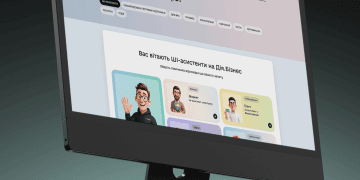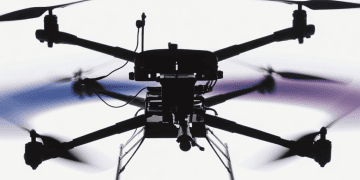- Direction:
- GovTech
Exclusive Interview: How Ukraine’s Digital State Became a Model for Resilience and Reinvention
- Publication date and time:
- Reading time:
- 3 min

Ukraine’s digital transformation has been called one of the most ambitious and successful government reform stories of the decade. Now, in a fresh interview for Berlin Global Dialogue, Valeriya Ionan, Advisor to the First Deputy Prime Minister of Ukraine, explains how a vision born in peacetime became the backbone of national resilience during full-scale war — and why other nations should take note.
From digitisation to reinvention
Founded in 2019 under the leadership of Mykhailo Fedorov, the Ministry of Digital Transformation set out not simply to move services online, but to fundamentally rethink the relationship between citizens and the state. Drawing on her private-sector background, Ionan brought a user-first, product-thinking mindset into government.
«In the private sector, you are trained to think user-first, move fast, and focus on outcomes, ” she says. „When I entered government, I brought that mindset with me. We treat citizens as customers who deserve speed, transparency, and simplicity.“
At the heart of this transformation is Diia, Ukraine’s national digital ecosystem, now used by more than 22.5 million people. It offers 30 digital documents and over 170 services — from IDs and tax records to business registration, pension applications, and even marriage licenses.
Global firsts and rapid growth
In just six years, Ukraine has achieved a series of firsts:
- Fully valid digital passports equivalent to paper and plastic documents.
- Instant online business registration in minutes.
- The world’s first fully online marriage service, featured by TIME magazine.
- A leap from 102nd to 5th place globally in digital public service development, and 1st in the world for e-participation.
This progress, Ionan notes, rests on what she calls the «golden triangle» of public–private–civil society partnerships, built on trust, speed, and shared vision.
Wartime resilience by design
russia’s full-scale invasion in 2022 tested Ukraine’s digital systems in ways few could have imagined. The Ministry pivoted rapidly to wartime services:
- eDocument for those without physical IDs.
- eRecovery for housing compensation claims.
- eEnemy secure chatbot for reporting enemy positions.
- Diia.TV and Diia.Radio to ensure access to verified information during blackouts.
«Crises don’t wait, ” Ionan stresses. „That is why digital infrastructure must be ready before the crisis arrives.“ A week before the invasion, Ukraine passed a national cloud law, enabling rapid migration to secure cloud storage — keeping services online even after missile strikes hit physical data centers.
Building skills and a future economy
Beyond technology, Ukraine’s transformation is about people. Diia.Education has already helped nearly 3 million Ukrainians gain over 4.3 million certificates in digital and professional skills. CDTO Campus is training over 1,000 Chief Digital Transformation Officers across government.
Meanwhile, the WINWIN Strategy is shaping a post-war economy built on 14 priority sectors — from AI and DefenseTech to GreenTech and advanced manufacturing.
«Our formula is simple: People + Freedom + Technology, ” Ionan says. „We are building a country where every talent can thrive — and where the boldest ideas can scale globally.“
A blueprint for others
For emerging economies, Ionan believes Ukraine’s experience offers a clear lesson: governments can move fast, innovate at scale, and earn public trust if they combine political will with product thinking and a citizen-first approach.
«We did not simply digitise bureaucracy — we dismantled outdated systems and rebuilt them around people’s needs, ” she says. „You don’t build for stability — you build for resilience.“
Read the full Berlin Global Dialogue interview here: How Ukraine’s Digital State is Driving Resilience and Reinvention


